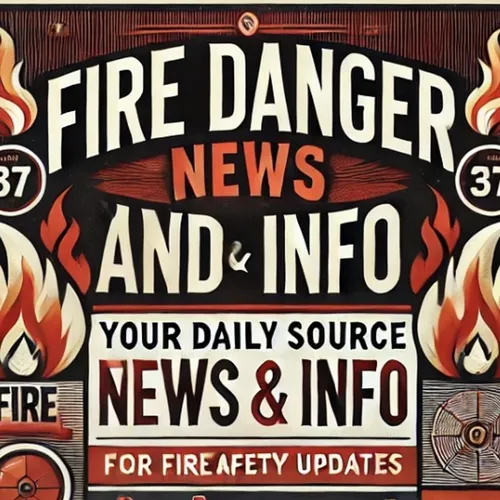Brace for Blazes: Heightened Fire Danger Grips the U.S. as Heat and Dryness Persist
- Author
- Quiet. Please
- Published
- Sat 26 Jul 2025
- Episode Link
- https://www.spreaker.com/episode/brace-for-blazes-heightened-fire-danger-grips-the-u-s-as-heat-and-dryness-persist--67134395
Persistent hot and dry weather is driving increased fire danger in several regions of the United States, with the Pacific Northwest and the Southwest facing some of the most severe conditions this week. The United States Department of Agriculture reports that national forests throughout the Pacific Northwest, including Washington and Oregon, have raised their fire danger levels to high or very high. This escalation has brought new public use restrictions, aimed at curbing human-caused wildfires. Firefighters are urging vigilance, especially by those recreating outdoors, as high temperatures and low humidity continue to strain available resources, and conditions may change rapidly.
In southwestern Oregon, the Oregon Department of Forestry elevated the fire danger level to high in Jackson and Josephine counties, impacting the broader Rogue Valley region according to KOBI NBC5. This change brings additional restrictions on the use of power-driven equipment such as chainsaws and mowers, particularly during afternoon hours when temperatures and wind can create optimal fire-starting conditions. Helicopters and other air support have been deployed for rapid response, and the industrial fire precaution level has also been raised to two, meaning even industries operating in forested areas are facing stricter controls.
In Arizona, containment efforts are underway for the White Sage and Dragon Bravo fires near Jacob Lake and Fredonia, as covered by ABC15 Arizona. The White Sage fire, traced to lightning on July ninth, has already grown to nearly fifty-nine thousand acres and is just over sixty percent contained. Evacuation orders were issued and then partially lifted as progress was made, while ongoing closures on U.S. Highway eighty-nine A continue to affect the region. Meanwhile, the Dragon Bravo fire, which began on July fourth, has already destroyed dozens of structures, including nationally important facilities near the Grand Canyon. In response, Grand Canyon National Park has moved to stage two fire restrictions, banning all wood and charcoal fires until substantial rainfall lowers the risk.
National Park Service officials confirm that other parks, including Yosemite, are also under tightened fire restrictions due to heightened fire danger. Public safety messages stress the importance of adhering to local guidance, signing up for emergency alerts, and making evacuation plans in advance.
While much of the current focus is on the western United States, the National Weather Service notes that shifting weather patterns, such as high winds in Oklahoma and heatwaves extending toward the Northeast, can expand the risk of fire outbreaks and complicate firefighting efforts across the nation. These trends exemplify the increasing challenge of managing fire danger in the face of prolonged hot and dry summers, underscoring the need for heightened public awareness and preparedness according to both state agencies and federal land managers.
Some great Deals https://amzn.to/49SJ3Qs
For more check out http://www.quietplease.ai
